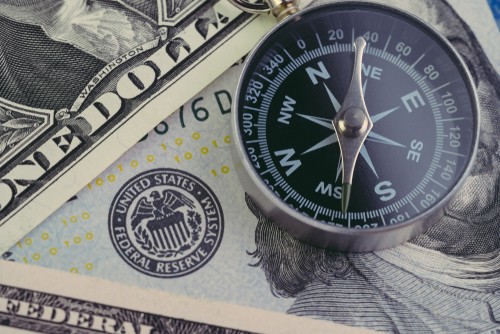Interest rates are very important for the foreign exchange markets. The interest rate of a country is defined by the central bank.
Our Forex Signals
1 - month
Subscription
 Up to 15 signals daily
Up to 15 signals daily 76% success rate
76% success rate Entry, take profit & stop loss
Entry, take profit & stop loss Amount to risk per trade
Amount to risk per trade Risk reward ratio
Risk reward ratiomonth
3 - month
Subscription
 Up to 15 signals daily
Up to 15 signals daily 76% success rate
76% success rate Entry, take profit & stop loss
Entry, take profit & stop loss Amount to risk per trade
Amount to risk per trade Risk reward ratio
Risk reward ratiomonth
 Most popular
Most popular
6 - month
Subscription
 Up to 15 signals daily
Up to 15 signals daily 76% success rate
76% success rate Entry, take profit & stop loss
Entry, take profit & stop loss Amount to risk per trade
Amount to risk per trade Risk reward ratio
Risk reward ratiomonth
Lifetime
Subscription
 Up to 15 signals daily
Up to 15 signals daily 76% success rate
76% success rate Entry, take profit & stop loss
Entry, take profit & stop loss Amount to risk per trade
Amount to risk per trade Risk reward ratio
Risk reward ratioSeparate Swing Trading Group
 Up to 3 signals weekly
Up to 3 signals weekly 76% success rate
76% success rate Entry, take profit & stop loss
Entry, take profit & stop loss Amount to risk per trade
Amount to risk per trade Risk reward ratio
Risk reward ratiomonth
1 - month
Subscription
 Up to 15 signals daily
Up to 15 signals daily 76% success rate
76% success rate Entry, take profit & stop loss
Entry, take profit & stop loss Amount to risk per trade
Amount to risk per trade Risk reward ratio
Risk reward ratiotime
Eightcap - Regulated Platform With Tight Spreads

- Minimum deposit of just 250 USD to get lifetime access to all the VIP channels
- Use our Secure and Encrypted Infrastructure
- Spreads from 0.0 pips on Raw Accounts
- Trade on the Award-Winning MT4 & MT5 Platforms
- Multi-jurisdictional Regulation
- No Commission Trading on Standard Accounts

It is a tool for managing the economy – either by increasing the interest rate to curb inflation, or by lowering the interest rate to promote growth.
Why does the interest rate matter?

The interest rate has several functions:
3
Payment methods
Trading platforms
Regulated by
Support
Min.Deposit
Leverage max
Currency Pairs
Classification
Mobile App
Min.Deposit
$100
Spread min.
Variables pips
Leverage max
100
Currency Pairs
40
Trading platforms
Funding Methods





Regulated by
FCA
What you can trade
Forex
Indices
Actions
Cryptocurrencies
Raw Materials
Average spread
EUR/GBP
-
EUR/USD
-
EUR/JPY
0.3
EUR/CHF
0.2
GBP/USD
0.0
GBP/JPY
0.1
GBP/CHF
0.3
USD/JPY
-
USD/CHF
0.2
CHF/JPY
0.3
Additional Fee
Continuous rate
Variables
Conversión
Variables pips
Regulation
Yes
FCA
No
CYSEC
No
ASIC
No
CFTC
No
NFA
No
BAFIN
No
CMA
No
SCB
No
DFSA
No
CBFSAI
No
BVIFSC
No
FSCA
No
FSA
No
FFAJ
No
ADGM
No
FRSA
71% of retail investor accounts lose money when trading CFDs with this provider.
Min.Deposit
$100
Spread min.
- pips
Leverage max
400
Currency Pairs
50
Trading platforms
Funding Methods




Regulated by
CYSECASICCBFSAIBVIFSCFSCAFSAFFAJADGMFRSA
What you can trade
Forex
Indices
Actions
Cryptocurrencies
Raw Materials
Etfs
Average spread
EUR/GBP
1
EUR/USD
0.9
EUR/JPY
1
EUR/CHF
1
GBP/USD
1
GBP/JPY
1
GBP/CHF
1
USD/JPY
-
USD/CHF
1
CHF/JPY
1
Additional Fee
Continuous rate
-
Conversión
- pips
Regulation
No
FCA
Yes
CYSEC
Yes
ASIC
No
CFTC
No
NFA
No
BAFIN
No
CMA
No
SCB
No
DFSA
Yes
CBFSAI
Yes
BVIFSC
Yes
FSCA
Yes
FSA
Yes
FFAJ
Yes
ADGM
Yes
FRSA
71% of retail investor accounts lose money when trading CFDs with this provider.
Min.Deposit
$50
Spread min.
- pips
Leverage max
500
Currency Pairs
40
Trading platforms
Funding Methods




What you can trade
Forex
Indices
Actions
Raw Materials
Average spread
EUR/GBP
-
EUR/USD
-
EUR/JPY
-
EUR/CHF
-
GBP/USD
-
GBP/JPY
-
GBP/CHF
-
USD/JPY
-
USD/CHF
-
CHF/JPY
-
Additional Fee
Continuous rate
-
Conversión
- pips
Regulation
No
FCA
No
CYSEC
No
ASIC
No
CFTC
No
NFA
No
BAFIN
No
CMA
No
SCB
No
DFSA
No
CBFSAI
No
BVIFSC
No
FSCA
No
FSA
No
FFAJ
No
ADGM
No
FRSA
71% of retail investor accounts lose money when trading CFDs with this provider.
It is the cost that a central bank charges the country’s banks for lending them money and they in turn use it as a basis for what they charge their clients for financing.
The interest rate is also what the central bank pays to investors in the debt instruments it issues.
This makes it a tool of the central bank that has effects on inflation, growth and the exchange rate: if the interest rate is low and credit is cheap, people are more willing to spend, this can generate growth, but also inflation because there is more demand; If the interest rate is high, the cost of credit will be higher, the growth will be lower and inflation will also be because demand falls.
Rising interest rates
When a central bank raises its interest rates, it has the effect of strengthening the value of its currency against other currencies.
Indeed, a higher interest rate ensures better remuneration for investors (via foreign exchange swap transactions).
For example, if the Fed raises its rates, dollar positions are more profitable and investors will turn more to dollar-denominated assets to take advantage of this compensation.
The Dollar will therefore appreciate in the foreign exchange market.
Negative Interest Rates
Several central banks have lowered the reference interest rates to negative levels.
This implies that commercial banks incur losses when they deposit their excess liquidity at the central bank, because they then receive less than they deposited.
The negative interest rates are an incentive for banks to lend money to the public, which could increase economic growth and inflation, central bank targets in countries with very low inflation and low growth.
They can also influence the exchange rate, because there is an incentive to invest in nominated assets in other currencies with higher interest rates.
That is, they promote exchange rate depreciation. Currency depreciation influences growth, because it encourages exports.
However, it is a novel measure and there is little experience with negative interest rates. Economists are following with interest this new phenomenon.
Some negative consequences could be the decrease in the profitability of the banks and an excess of risk taking by investors due to the lower profitability.
There is a risk of creating bubbles in some sectors, such as real estate.
Several analysts see negative interest rates as desperate measures to achieve inflation targets that are harmful to the financial system and economic stability.
The countries that currently have negative interest rates are Denmark (-0.65%), Switzerland (-0.75%), Sweden (-0.35%) and Japan (-0.1%).
The European Central Bank (ECB) also has negative interest rates of -0.3%.
If they work, are we at the beginning of a new global era of negative interest rates? What implications can negative interest rates have on economies?
Negative Interest Rate in the European Union
The European Central Bank (ECB) maintained an interest rate of zero since mid-2012 and negative since mid-2014, to avoid deflationary expectations.
The ECB has an annual inflation target of 2%, while inflation expectations in 2015 were 1% for the next 4 years.
The interest rate differential between Europe and the United States has contributed to the depreciation of the Euro against the Dollar.
Negative Interest Rate in Japan
In February 2016, the Bank of Japan will adopt negative interest rates to avoid deflationary expectations.
The inflation rate is 0.2% (year to year in December 2015), while the inflation target is 2%. The interest rate is -0.1%.
Japan suffers from a low growth situation (in 2015 the GDP fell 0.1%) combined with low inflation.
The government of Japan has already tried to increase growth with increased public spending and monetary expansion.
The negative interest rate is considered to be a measure that is implemented after other traditional measures have failed.
The authorities also mention the negative situation of the Chinese economy and the high volatility of world financial markets as factors of a negative forecast for the economy of Japan.
Japan’s per capita product growth rate is also affected by the phenomenon of population aging and, unlike European countries, almost zero immigration.
Negative Interest Rate in Sweden
In the case of Sweden, the central bank (Risk bank) seeks to achieve the annual inflation target of 2%. Sweden’s inflation forecast for this year was between 0.7% and 1.3%.
The Risk bank has difficulties in reaching its inflation target due to the fall in the price of raw materials and the low prices of commodities.
The depreciation of the Euro has caused the cost of imports from Sweden to fall, which had a downward impact on inflation.
By promoting banks to lend to the public instead of depositing funds in the Riskbank, inflationary pressure is created.
At the same time, the holding of the national currency (Swedish krona) is discouraged, which creates a pressure to depreciate it. Depreciation has a positive impact on inflation.
Unlike Japan, Sweden’s economy does not have a growth problem, since it is 3%.
The interest rate of the Riskbank entered negative territory in 2014.
Negative Interest Rate in Denmark

The reference interest rate in Denmark is -0.0172%
Denmark has a currency (Danish crown) that is tied to the Euro with a possible variation of 2.25%.
The negative interest rate of the Denmark National bank (central bank of Denmark) has been in negative territory since mid-2012, in order to keep the price of the Danish Crown close to that of the euro.
As the European Central Bank (ECB) lowered its interest rate to combat deflation, the Denmark’s National bank also had to lower the interest rate to prevent the Danish crown from appreciating.
If the Denmark’s National bank had not lowered the interest rate, investors would have purchased assets nominated in Danish Crowns to take advantage of the yield differential; this would have appreciated the currency.
Denmark is part of the European monetary system. The European Exchange Mechanism (ERM), to which Denmark adheres, establishes the possible fluctuation of the Danish Crown against the Euro.
Analysts’ fears of the situation in Denmark loom over the stability of the financial and economic system.
Short-term mortgage rates are negative and property prices have raised sharply, especially in Copenhagen, the capital of Denmark.
Negative Interest Rate in Switzerland
The reference interest rate of the Swiss central bank (SNB) is -0.75%.
Switzerland lowered the interest rate to negative ground in June 2014, at the same time that the ceiling of 1.20 francs per euro was abandoned.
One of the reasons is to weaken the currency of Switzerland, the Swiss franc, to stimulate the economy and increase inflation.
The United States does not rule out negative interest rates
The United States Federal Reserve will test the ability of US banks to operate with negative interest rates for a prolonged period of time.
It will carry out a stress test in which interest rates enter negative territory in 2016 and remain negative until 2019.
AvaTrade - Established Broker With Commission-Free Trades

- Minimum deposit of just 250 USD to get lifetime access to all the VIP channels
- Awarded Best Global MT4 Forex Broker
- Pay 0% on all CFD instruments
- Thousands of CFD assets to trade
- Leverage facilities available
- Instantly deposit funds with a debit/credit card

This does not represent a forecast, only a test of the capacity of the banks, although it is considered as a possible course of action.
However, current expectations are that the Federal Reserve will continue raising its interest rates. Currently the target is at 0.25% (in December 2015 it rose from 0%).
If the United States continues to raise its reference interest rate, this will have a positive effect on European economies and lower downward pressure on interest rates.

